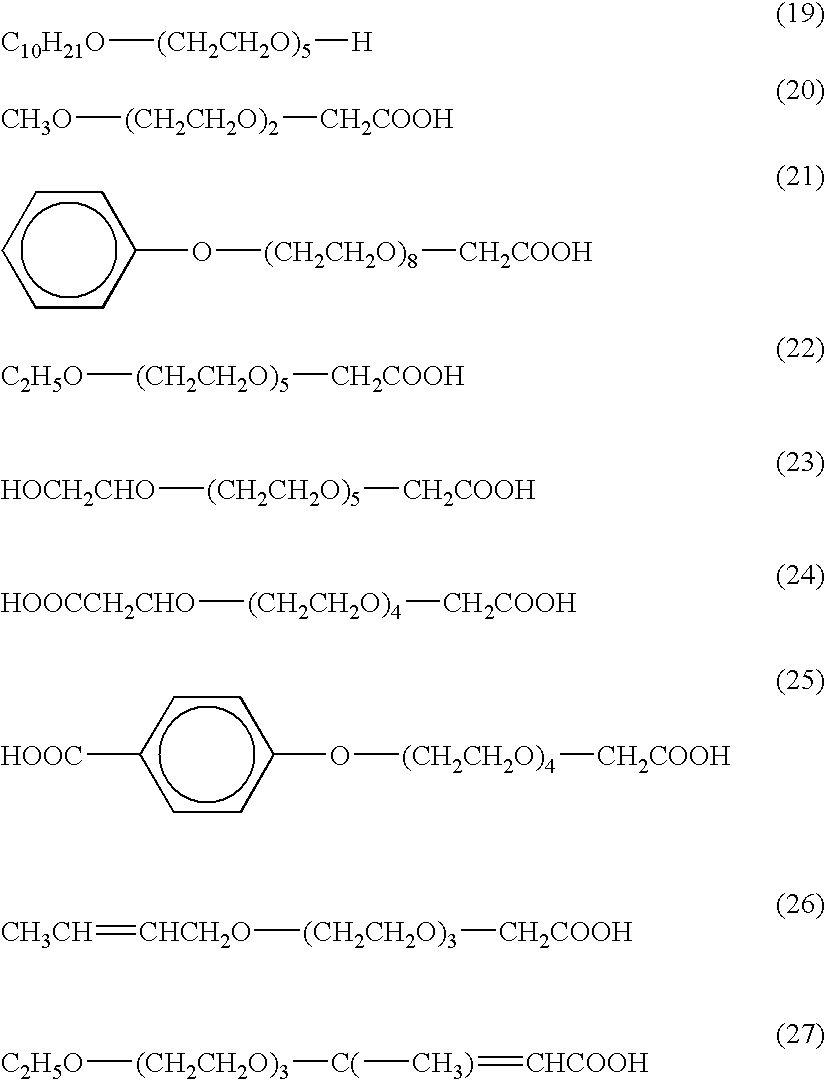Magnetic Composite Body, Production Method Thereof, Method for Removing Substance with Mannose on Its Surface, and Method for Concentrating Substance with Mannose on Its Surface
a technology of mannose and composite body, which is applied in the direction of magnetic paint, separation process, magnetism/organic-metallic materials, etc., can solve the problems of reducing separation and refinement efficiency, and achieve the effect of high-sensitivity analysis conducted in a short time, easy to use, and short tim
- Summary
- Abstract
- Description
- Claims
- Application Information
AI Technical Summary
Benefits of technology
Problems solved by technology
Method used
Image
Examples
example 1
(Preparation of Magnetic Nanoparticle Dispersion Liquid)
[0085]10.8 g of iron(III) chloride hexahydrate and 6.4 g of iron(II) chloride tetrahydrate were dissolved in 80 ml of 1 mol / l (1N) hydrochloric acid aqueous solution, so that a mixture solution was obtained. 96 ml of 28% by weight ammonia water was added to the obtained solution at a rate of 2 ml / min while the solution was stirred. Thereafter, the solution was heated and maintained at 80° C. for 30 minutes, and then cooled to room temperature. The formed aggregates were purified with water by decantation. The formation of magnetite (Fe3O4) having a crystallite diameter of about 12 nm was confirmed by an X-ray diffraction method.
[0086]The aggregates were dispersed in 250 ml of an aqueous solution containing 2.3 g of polyoxyethylene (4.5) lauryl ether acetic acid (exemplary compound (4)) dissolved therein, so that a magnetic nanoparticle dispersion liquid A (with a Fe concentration of 13.2 g / L) was obtained. The dispersion liquid...
example 2
[0087]A magnetic nanoparticle dispersion liquid B was prepared in the same manner as the preparation of the magnetic nanoparticle dispersion liquid A, except that 250 ml of the solution containing 2.3 g of polyoxyethylene (4.5) lauryl ether acetic acid dissolved therein used in the preparation of the magnetic nanoparticle dispersion liquid A was replaced with 250 ml of a solution containing 0.8 g of polyoxyethylene (2) methyl ether acetic acid (exemplary compound (20)) and 1.3 g of aspartic acid dissolved therein. Similarly to Example 1, the dispersion liquid B was subjected to gel filtration, so that magnetite was separated. The collected magnetite was dried, and its infrared absorption spectrum was measured, whereby the fixation of exemplary compound (20) and aspartic acid on magnetite was confirmed.
example 3
[0088]A magnetic nanoparticle dispersion liquid C was prepared in the same manner as the preparation of the magnetic nanoparticle dispersion liquid A, except that 250 ml of the solution containing 2.3 g of polyoxyethylene (4.5) lauryl ether acetic acid dissolved therein used in the preparation of the magnetic nanoparticle dispersion liquid A was replaced with 250 ml of a solution containing 1.2 g of polyoxyethylene (8) phenyl ether acetic acid (exemplary compound (21)) and 0.3 g of chondroitin sulfuric acid dissolved therein. Similarly to Example 1, the dispersion liquid C was subjected to gel filtration, so that magnetite was separated. The collected magnetite was dried, and its infrared absorption spectrum was measured, whereby the fixation of exemplary compound (21) and chondroitin sulfuric acid on magnetite was confirmed.
PUM
| Property | Measurement | Unit |
|---|---|---|
| Particle size | aaaaa | aaaaa |
| Magnetism | aaaaa | aaaaa |
| Affinity | aaaaa | aaaaa |
Abstract
Description
Claims
Application Information
 Login to View More
Login to View More - R&D
- Intellectual Property
- Life Sciences
- Materials
- Tech Scout
- Unparalleled Data Quality
- Higher Quality Content
- 60% Fewer Hallucinations
Browse by: Latest US Patents, China's latest patents, Technical Efficacy Thesaurus, Application Domain, Technology Topic, Popular Technical Reports.
© 2025 PatSnap. All rights reserved.Legal|Privacy policy|Modern Slavery Act Transparency Statement|Sitemap|About US| Contact US: help@patsnap.com


